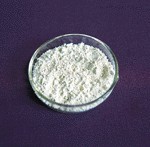4) titanium and its alloys


钛及钛合金
1.
A simultaneous determination of oxygen and hydrogen in titanium and its alloys on infrared absorption has been described,and the optimal conditions have been obtained.
叙述了用红外吸收法对钛及钛合金中氧和氢联合测定的方法,取得了测定的最佳条件。
2.
Anodizing coloring mechanism of titanium and its alloys was analyzed to make sure the relationship of fiun thickness and coloring power source, so that the technological method and current design parameters were deduced to keep the color consistence of bath production, which provided an available method for coloring of titanium and its alloys.
分析了钛及钛合金阳极氧化着色机理及色膜厚度与氧化着色电源之间的关系,得出了保证成批量着色颜色一致性的工艺方法及电流设计参数,为钛及钛合金着色的应用提供了一种可用的方法。
3.
However, the production and utilization of titanium and its alloys are limited for their high chemical activity at molten state.
钛及钛合金具有密度小、强度高、耐腐蚀等一系列优点,在航空航天、国防军事、民用轻工等领域均有广泛应用前景。
5) Ti and its alloy


钛及钛合金
1.
The determination of Zr, Ru, Pd, Hf, Cu, Y, V, Mo, Nb, Al, Co, Ni, Ta, Bi, Sn, Cr and Mn in Ti and its alloys have been studied using an atomic emisson spectrum spectroscopy.
采用发射光谱分析技术,研究了钛及钛合金中Zr,Ru,Pd,Hf,Cu,Y,V,Mo,Nb,Al,Co,Ni,Ta,Bi,Sn,Cr,Mn的光谱测定方法。
6) titanium and titanium alloy


钛及钛合金
1.
Discussion about specified residual elongation stress in the standard of titanium and titanium alloy;
钛及钛合金标准中规定残余伸长应力的探讨
2.
Preparation of metallographic specimen for titanium and titanium alloy used for surgical implants
外科植入物用钛及钛合金金相试样制作浅谈
3.
The paper introduces the possibility of application of the titanium and titanium alloy for wrought products of motorcar.
介绍了汽车中使用钛及钛合金各类加工材的可能性。
补充资料:钛
| 钛 titanium 一种化学元素 。化学符号Ti , 原子序数22 ,原子量47.88,属周期系ⅣB族。1791年英国人 W.格雷哥尔在分析门纳矿(现在称钛铁矿)时发现钛的氧化物。1795年德意志人M.H.克拉普罗特同时研究了匈牙利产的金红石矿和门纳矿,认为这两种矿物中都含有一种新元素的氧化物,并以希腊神话中的大地之子Titans命名新元素为titanium 。1910年美国人M.A.亨特用金属钠还原四氯化钛,制得金属钛。钛在地壳中的含量为0.6%,占第九位,远比许多常见的金属(如锌、铜、锡、铅、汞、银、金)要多,但由于提炼纯钛比较困难,用途不广,长期被认为是一种稀有元素,实际上这是一种误解 。最主要的钛矿物是钛铁矿( FeTiO3 ) 、金红石(TiO2),其次是钙钛矿(CaTiO3)、榍石(CaTiSiO5)。
钛是银灰色金属,熔点1660℃,沸点3287℃,密度4.5克/厘米3(20℃)。杂质的存在会改变钛的熔点 ,通常,碳、氧、氮等杂质会使它的熔点升高,铁、锰、铬、铜等杂质使熔点降低。纯的金属钛质软,有延展性,纯度越高塑性越大,机械加工性能越好。不纯的金属钛在常温下硬而脆。钛有顺磁性,导电性和导热性较差。钛是不活泼金属,常温下,它在空气中相当稳定 。在250℃左右,钛的表面失去金属光泽,形成金黄色至蓝色的氧化物薄层,温度再升高,氧化物层逐渐加厚,1200℃时,钛迅速被氧化。在800℃以上,钛与氮、氢、水蒸气、二氧化碳发生反应。钛与大多数金属形成合金,可以增加金属钛的强度。由于钛的表面有一层致密的保护层,金属钛在常温下不受稀盐酸、稀硫酸、稀碱溶液和潮湿的氯气侵蚀,硝酸和王水能使钛钝化,也不起反应。只有氢氟酸及热的浓盐酸、浓硫酸、浓磷酸才能与钛作用。钛对海水的抗腐蚀能力特 别强。钛的氧化态为+2、+3、+4,以+4价化合物最稳定。 从矿石提取钛的方法有:①酸分解法。用硫酸将钛铁矿分解,可得硫酸氧钛(TiOSO4)和硫酸亚铁,除铁后,使硫酸氧钛水解为氢氧化钛,再灼烧为二氧化钛。②氯化法。将钛矿石在碳存在下通入氯气,可得四氯化钛。用金属镁还原四氯化钛,可制得海绵状的金属钛。高纯的钛则要用碘化物热分解法制取。金属钛的优点是:耐腐蚀;钛比钢铁轻,密度只有铜的一半;强度高,比铝合金高2~3倍。因此,钛及其合金是制造飞机、船舶、汽车和火车车厢的理想材料,尤其适合做海轮的船壳和海水淡化装置,也用作火箭、导弹、超音速飞机的结构材料。钛酸钡(BaTiO3)是一种铁电体和压电体,用作交换声能和电能的换能器。 |
说明:补充资料仅用于学习参考,请勿用于其它任何用途。
参考词条
